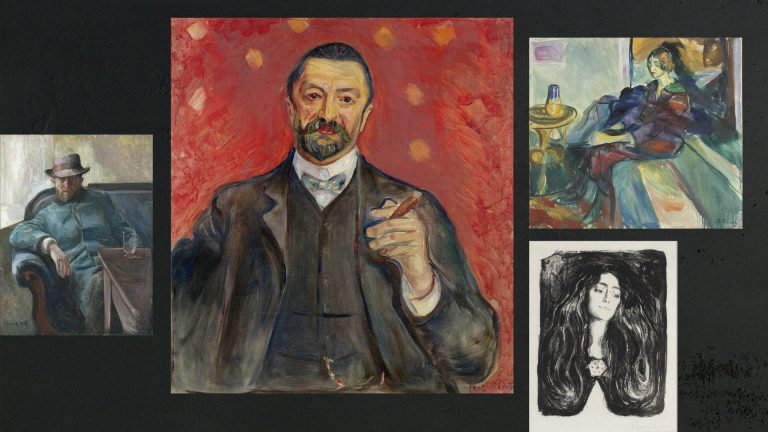With the World Cup soon set to start, there is no bigger sign of the growth of women’s football than its endorsement in sticker form, says GREG Lansdowne.
There are many ways to judge the rise of women’s football over the last few years. The big-name sponsorship deals are one. (Visa for the upcoming Women’s World Cup, alongside a seven-year deal with UEFA; Barclays’ £10 million three-year association with the English Women’s Super League; Boots becoming a sponsor of the England women’s national team, as well as Scotland, Wales, Northern Ireland and Ireland, until Euro 2021, to name just a few examples).
Then there are the eye-catching attendance figures at women’s games this year: 60,739 for Atletico Madrid vs Barcelona, in Spain; 39,027, for Juventus vs Fiorentina, in Italy; and 43,264 for the recent English Women’s FA Cup final between Manchester City and West Ham.
But the real sign of the recent progress made by the sport is perhaps the arrival of Panini sticker albums devoted to women’s football. After all, a clear indication of having made it as a footballer has long been to feature in sticker form.
Male footballers have been able to see themselves as Panini stickers (or cards initially) from the early 1960s onwards but only a tiny number of sportswomen have laid claim to appear on a collectable even as recently as a decade ago.
Panini have been levelling up this gender inequality with a series of Women’s World Cup and Euro albums since 2011 – 20 years after the first Women’s World Cup and more than 40 years after the first men’s World Cup album – but it has been a gradual process.
To test the market, the debut Women’s World Cup album was only available in the host nation, Germany. Such was the demand that the initial substantial print run was sold out in two weeks, resulting in a further run around a week before the tournament began.
It wasn’t all plain sailing with the inaugural album, though. When Panini were compiling it, the Mexico Football Federation initially sent pictures of its men’s team, as officials did not realise such a collection existed for the women’s game.
For the next tournament, in 2015, marketing and distribution for the World Cup album was extended from just the host nation – Canada – to around 25 countries, with the UK getting its first opportunity to collect women’s football stickers. Two years later Panini brought out the first sticker album dedicated to the UEFA Women’s Euros, as well as the first digital trading card set devoted to the women’s game.
The sticker album for France 2019 – which kicks off on June 7 – is expected to be the most far-reaching and extensive yet, with 408 players represented in an album totalling 480 stickers.
Among those to feature is the Dutch goalkeeper Loes Geurts, who plays domestically for Kopparbergs/Göteborg FC, in Sweden.
She collected stickers of Dutch male footballers during her childhood but there was little chance of the hobby providing early female inspirations along her path to a career in the game.
“In a way I thought it was strange that there were no stickers of female players but I grew up in a time where I did not even know about the existence of a women’s national team,” says Geurts. “There were not many women at the time playing football and it was not possible for us women to be professional so, knowing that, it was no surprise that there were no stickers of female players.”
She and other players hope that the growth of albums dedicated to the women’s game will help to encourage girls to develop a deeper interest in the sport, in the same way that stickers have helped generate a love of the game in generations of boys.
Geurts adds: “I think it is very important [to have women’s football albums] because girls have role models now and know that one day they could be on a sticker too. It gives them a realistic dream, which is super important for the development of women’s sports and equality. Any kid, of any gender, should be able to have dreams about being that big star one day.”
Putting together an international tournament football sticker album is a long and arduous process, with Panini needing to not just obtain the license from the governing body (FIFA in this case) but also the agreement of every competing nation to provide images of their players and branding.
Geurts’ compatriot Tessel Middag, who plays for West Ham and has featured in two Panini albums, says: “I was part of the leadership group who were asked if Panini could use our image rights for the [2015 World Cup] album.
“We all thought that would be really cool. We had all had the same experience of collecting men’s football stickers when growing up so we really wanted to be part of a Panini album ourselves. I think we were asked a few months before the tournament and were really happy to say ‘yes’.”
Now there have been three Women’s World Cup and one Women’s Euro sticker albums, there has been an inevitable call in some quarters for similar collections to cover the domestic game.
Clamour has been strongest in Spain, where an ongoing petition has garnered 50,000 signatures for a Liga Iberdrola (Spanish women’s top division) sticker album.
But what about in England? The Women’s Super League is certainly developing fast, with prize money being introduced for the first time next season, thanks to the Barclays deal. Having seen herself in sticker form in Dutch orange, Middag would love for her next appearance to be in claret and blue.
“Absolutely, because even around Romford – where we train – there are a lot of people not aware of West Ham having a women’s team. Being able to collect stickers from a certain team can help your value, in a way, with people thinking ‘there are stickers for them, so they must be special’ and wanting to know more.”
Whether such a domestic album materialises remains to be seen, but the Football Association certainly sees sticker books as an important element in the growth of the women’s game. Damian Treece, FA licensing partnerships manager, says: “One of the main barriers to the growth of the women’s game has historically been both a lack of media visibility and opportunity to embrace and showcase your affinity to the players and the sport via product. Having a product that not only puts the players front and centre, but also physically puts their faces in fans’ hands, is undeniably powerful. Couple that with the inherent collectability and generational advocacy of sticker collecting, it’s a winning combination.”
Greg Lansdowne is a freelance writer. His book on the history of Panini stickers, Stuck On You, was published in 2015 and turned into an ITV documentary in 2017






